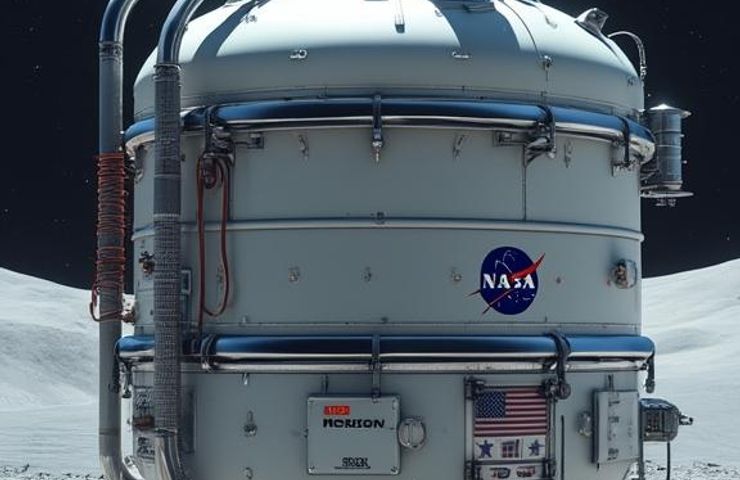
NASA’s Cryogenic Fluid Management Push Boosts Hydrogen Storage Tech for Deep Space Logistics
July 31, 2025NASA is dialing in the future of hydrogen storage by going after one of space exploration’s biggest headaches—keeping cryogenic propellants like liquid hydrogen from boiling off over time. This summer, at the Marshall Space Flight Center (MSFC) in Huntsville, Alabama, NASA is launching into a 90-day ground test that’ll put years of engineering to the test. The goal? Make something that once sounded like sci-fi—zero boiloff—a real part of our space missions.
Why This Matters: Zero Boiloff Could Be a Game-Changer
Here’s the deal: Cryogenic propellants like liquid hydrogen and liquid oxygen power some of our most efficient rockets. But they’re also absurdly cold—hydrogen has to be kept at a bone-chilling -423°F. And in space, that’s a tough ask. Sunlight, cosmic radiation, even internal systems—all of it can warm the tanks and make fuel evaporate before it ever gets used.
That’s where NASA’s Cryogenic Fluid Management (CFM) program comes in. It’s a cross-center effort featuring big roles by MSFC (where ground testing is happening), Glenn Research Center (GRC) (focused on tech development), and Ames Research Center (ARC) (handling simulations and modeling). The latest setup combines active and passive cooling: think helium-cooled tubes wrapped around tanks, next-gen insulation, and high-efficiency cryocoolers—all designed to stop fuel loss in its tracks.
The Tech: Cold as Ice and Built to Last
At the heart of the system is a layered approach to staying cool. First, you’ve got helium chilled to -424°F running through coils wrapped closely around the tank—it’s like a cold blanket that siphons off heat trying to sneak through. Beneath that is another set of super-chilled lines (this time around -298°F), protected by a slim aluminum heat shield that helps block radiant energy. Add in cutting-edge multi-layer insulation (MLI) and some high-tech, low-leakage valves from Sierra Space, and you’re looking at a design that can keep fuel rock-solid for months—or even years—without loss.
Real-World Tests, Real-World Partners
NASA’s not flying solo on this mission. In March 2024, SpaceX carried out a key in-space test aboard its Starship vehicle as part of a NASA Tipping Point partnership. Around the same time, Intuitive Machines successfully demonstrated fuel transfer on its IM-1 lunar mission. These achievements offer a glimpse into a not-so-distant future where orbital refueling and Moon-based fuel stations—relying on in-situ hydrogen production—are completely doable.
Why It Matters for Artemis and Beyond
So, why the big push on cryogenics now? Simple: it’s mission critical. For the Artemis program and future human trips to Mars, storing and using propellant in space—or even on the Moon—is a must. We’re not going to keep launching entire missions with full tanks from Earth. Instead, explorers will need to refuel in orbit, tap local resources through in-situ resource utilization (ISRU), and dramatically cut back on the mass (and cost) of things we send up from here.
The 90-day test running through September 2025 at MSFC could lock in a major milestone: cryogenic tanks that don’t lose a drop of hydrogen over long durations. If it works, it won’t just streamline space logistics—it could also majorly boost hydrogen and energy storage technologies here on Earth.
From Space to the Power Grid: What This Means for Earth
While the tech is space-grade, its benefits reach way beyond orbit. Think about grid-scale hydrogen energy storage, clean ammonia transport, and better handling of industrial gases—every lesson NASA learns here can ripple out into the push for sustainable energy on Earth. Cutting-edge valves, next-gen insulation, safer and larger LH2 tanks…these are the building blocks for a stronger, cleaner energy infrastructure.
In short, if you’re into the emerging green hydrogen economy, keep one eye on NASA’s cryogenic breakthroughs—they’re helping to write the playbook.
What’s Next: Proving It Works in the Real World
Lab simulations at GRC and airflow models courtesy of ARC are great, but running a real tank system under near-mission conditions for 90 days straight? That’s the real litmus test. If this zero boiloff system proves itself by late 2025, we could be looking at the dawn of practical, scalable orbital fuel depots—making long-distance space exploration more sustainable than ever.
Or, as one lead engineer put it: “You can’t go to Mars with half a tank. We’re making sure you don’t lose the rest on the way.”
The road ahead might be cold—literally—but with this blend of breakthrough tech, smart teamwork, and a laser focus on the future, it’s looking more solid than ever.
Source: nasa



 With over 15 years of reporting hydrogen news, we are your premier source for the latest updates and insights in hydrogen and renewable energy.
With over 15 years of reporting hydrogen news, we are your premier source for the latest updates and insights in hydrogen and renewable energy.